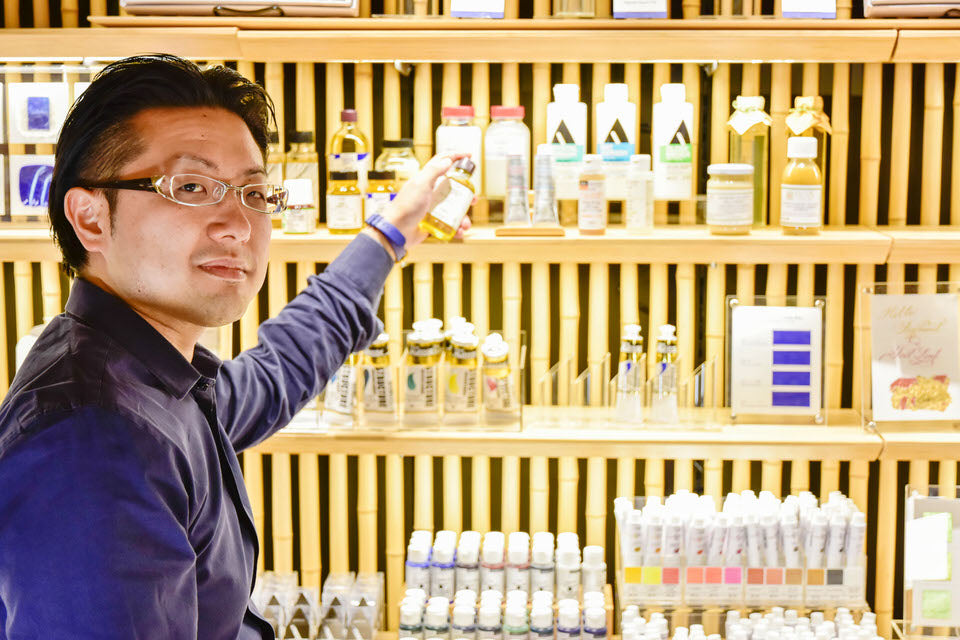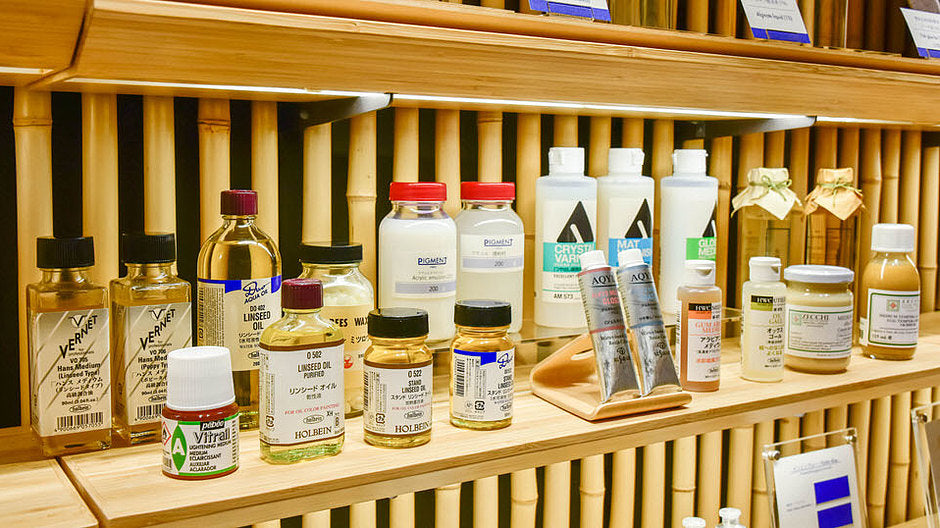In PIGMENT TOKYO, there are 4500 colors of pigments as well as the medium, which you mix with the pigments to make paint. Today, we interviewed Kei Iwaizumi, a staff of the PIGMENT, about one of the most important elements of determining the color of the pigments, “medium”.
―In the previous interview, you said” To make a paint, not only a pigment but also a binder is necessary.” however, can you tell us more about a “binder”?
Well, pigment itself has no fixing power, that is, just like a colored powder. In order to paint, we need a binder to stick onto the canvas. We call this binder a “medium”. These mediums play a crucial role in determining the color and the texture of the pigments. Therefore, the pigment becomes the paint only after it is mixed with medium.

―How many types of medium are there in PIGMENT?
We have around 10 types of mediums; among them there are roughly two different properties; the oil-based emulsion and the water-based emulsion. The oil-based emulsion is the insoluble medium which has oil as a main component. These mediums dissolve by organic solvent such as turpentine and petrol. Taking something familiar with our daily life, the nail polish remover is one of the organic solvents. Most popular oil-based emulsions are linseed oil, dammar gum and beeswax.

―What is the “water-based emulsion” on the other hand?
Water-based emulsion is a medium that can be diluted with water. For example, animal glue, gum Arabic, casein, egg and acrylic emulsion are water-based.

―What are the characteristics of oil-based and water-based medium?
Oil-based medium will create a calm and wet color while the water-based is a less wet finish but create a clear color.
―I see. Could you tell us more detailed information of each medium?
Of course. Can you guess how many colors are used in this color chart?

―There are various types of blue gradations. Do you mix with several colors of paints?
Actually, these are all painted by the same pigment, and the only thing we change is the medium. The color on the top is a pigment mixed with water, and the second one is mixed with gum Arabic, animal glue, acrylic resin and with linseed oil on the bottom.
―Well, you can create various colors by just changing the medium.
Exactly. More than 4500 colors of pigments and the 10 kinds of mediums, sometimes you can mix the mediums with each other, will allow us to create hundreds of different colors depending on the combination.
Before the Industrial Revolution, there was no tube colors. Therefore, each atelier has its own recipe and many formulas were created. In this sense, the medium plays an unsung hero that enhances the pigment in the paintings.

All items in this article are available at our online shop.
PIGMENT TOKYO「BINDERS, MEDIUMS & GLUES」These are the basic mediums for beginners. Please visit our website if you are interested.


